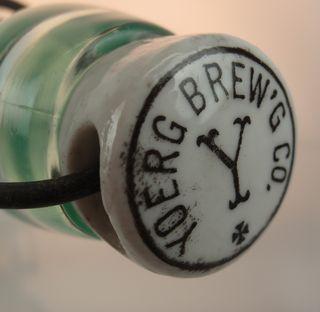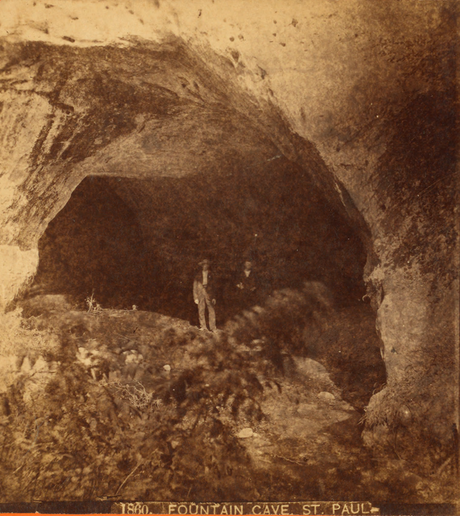One of the things that makes the twin cities of St. Paul and Minneapolis so unique is their setting in the midst of several river valleys. Garrison Keillor describes the geography this way in an article for National Geographic:
The geography of Minneapolis-St. Paul is simple: Two interlocking cities—the Great River with its rhythmic spelling M-i-ss-i-ss-i-pp-i flowing in from the north, through Anoka and over St. Anthony Falls, past the glass towers of downtown Minneapolis… and the very noble Franklin Avenue bridge, and Fort Snelling... Where the Minnesota River joins it from the west, the Mississippi does a sideways S through St. Paul, its rail yards, University Avenue with its entrepreneurial churn of storefront start-ups, Asian restaurants, muffler shops, then it crosses town near the great dome of the capitol with the team of golden horses on the roof, and bends south toward Red Wing, Winona, Dubuque, down to Prof. Harold Hill and Huck Finn territory.
The river conjured a sense of adventure for the explorers of yesteryear, as well as those who live here now—since little of the shoreline is developed, the land remains wild with myriad woods to meander through on foot or bike, skis or snowshoe.
The river itself has proven useful to industry—from shipping goods to creating hydroelectric power for factories. Over the course of the 160 years since the pioneers arrived, another aspect of the river, its soft St. Peter sandstone, has created a very different kind of niche for a handful of industries: As the rivers carved out the land, many caves developed that were later expanded and used for harboring foodstuffs.

Speleological Lager
Of course we all know the stories of the Wabasha Caves with their Prohibition-era gangster inhabitants; earlier, however, German immigrants with a taste for beer utilized the caves to brew. Among the most famous of the early breweries in St. Paul, Anthony Yoerg’s began in 1848, moving in 1871 to a location near Ohio St. where he excavated five cellars in the cliffs to create “Cave Aged Beer.” After waiting out Prohibition as the Yoerg Milk Company, the brewery remained in operation until 1952.
Other breweries included the Banholzer Brewery (1871-1904) located in the river bluffs in the West Seventh neighborhood, Stahlmann’s Cave Brewery (1855-1900) on the site of what became the Schmidt Brewery, and, in Minneapolis, the Heinrich Brewery (1886-1903) near the University of Minnesota’s West Bank campus.
The Fungus Among Us
For a time, St. Paul was the largest mushroom-growing center west of Pennsylvania—the mushroom capital of the Midwest. Beginning at the end of the 19th century, mushrooms were cultivated in more than fifty sandstone human-made caves which had originally been used to mine silica. Less scattered than its beer-brewing counterparts, Mushroom Valley stretched for several miles along the west side of the Mississippi River gorge, between South Wabasha Street, all the way to Pickerel Lake (think Harriet Island down the shore to the Lilydale Yacht Club). The mushroom caves were divided into three distinct segments: Plato Boulevard, Water Street, and Joy Avenue, and mushrooms grown in each had a flavor all their own.
The idea of growing mushrooms in St. Paul was attributed to French immigrants, who’d seen them grown in similar circumstances under the sewers of Paris. The practice thrived, more or less, from 1890 until the last cave opted out in the 1980s, around the time Lilydale Regional Park was created.

Stinky Cheese
Mushroom Valley was home to more than just fungus, molds were also in good supply. Again owing inspiration to the French—this time to the Roquefort Caves in South-central France—a professor of dairy industry at the University of Minnesota determined that the conditions of St. Paul’s sandstone caves mimicked those of the eponymous caves producing the world-famous cheese.
Beginning in 1933 and lasting into the 1950s, the U of M rented a cave and developed what came to be known as Minnesota Blue, earning St. Paul the moniker, “Blue Cheese Capital of the World” during World War II. The secret to this bleu cheese success was in the conditions, which couldn’t be duplicated artificially: the sandstone naturally kept temperature low and humidity high, a seemingly paradoxical combination.
The Twin Cities—especially St. Paul—abounds with interesting natural history, and there are myriad books to inform. I’ve been enjoying Greg A. Brick’s “Subterranean Twin Cities,” in which the author explores caves, rivers, streams, sewers, and tunnels both in historical documents and in person (yes, he’s explored sewers in person… Brave, crazy, or a little of both?).
Looking to explore the Twin Cities to find your dream home? Check out our Lifestyle Search to find the area that’s best for you!
Angela Anderson, 612-396-3654
Realtor, Results Support Services: EMAIL — BIO
Licensed Associate Working with Sharlene Hensrud of RE/MAX Results, and HomesMSP — Sharlene, John, Angela
Related Articles:
- HomesMSP Guide to Buying a Home
- Can Snow (or Frozen Lakes, at Least) Make us Happier?
- Finding your Place when Relocating

